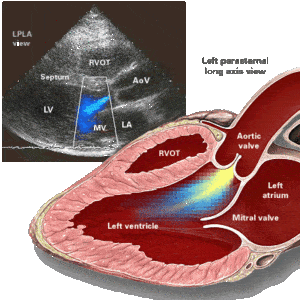What is neurofibromatosis?
Neurofibromatosis type 1 and type 2 comes under the heading of neuro-cutaneous diseases but it not only involves the nervous system and skin but also involves multiple organs of the body. It is also associated with bony deformity and different types of tumors.
The underlying pathology is an embryological defect in which the localized overgrowth of mesodermal and ectodermal tissues occur. The mesodermal derivatives, e.g. meninges and vascular system; and the ectodermal derivatives, e.g. skin, viscera, central nervous system, and peripheral nervous system are affected.
Mode of Inheritance
The mode of inheritance is autosomal dominant meaning 50% of the offsprings of a parent with neurofibromatosis will have the defected gene. Sometimes neurofibromatosis may not have any family history due to spontaneous mutation causing it.
Neurofibromatosis is broadly divided into two types – Neurofibromatosis type 1 (NF1), and Neurofibromatosis type 2 (NF2). The gene responsible for NF1 and NF2 is located in chromosome 17, and chromosome 22 respectively.
Neurofibromatosis type 1
It is also known as von Recklinghausen’s disease. The prevalence rate is 1 in 2500 live births. The male-to-female ratio is 1: 1. This disease is seen equally in all races.
Features of Neurofibromatosis type 1
- Cafe au lait skin macules – These are light brown patches on the skin with well-defined edges. Most commonly found in the trunk. Patients often consider these as birthmarks. These patches are symptomless meaning these do not itch, ooze, or gives any sense of discomfort other than cosmetic problems.
- Axillary freckling – This feature is present in 30% of cases of NF1. It is also known as the Crowe sign. These are small circular spots due to the deposition of melanin. These rashes are also symptomless.
- Plexiform neurofibromas – These are pedunculated growths arising from the subcutaneous plexus of nerves. These often cause morbidity, disfigurement, and psychological issues. Rarely these lesions can be transformed into malignant peripheral nerve tumors. If these lesions arise from the nerve plexus of internal organs or bones then it can cause a pressure effect (also known as diffuse neurofibroma). The pressure effect is usually manifested by pain, paresthesia, and weakness of respective nerve distribution areas. The involvement of organs can cause the loss of that particular organ. The involvement of cerebral blood vessels can be associated with stroke.
- Skeletal involvement – Can cause scoliosis, sphenoid bone deformity (characteristic of NF1), enlargement of the skull, and various other types of bony deformity. Sub-periosteal neurofibroma can case bone pain and bone fracture.
- Central nervous system involvement – Can cause epilepsy and mental retardation (10% to 15% cases).
- Eye involvement – Can cause Lisch nodules, optic glioma, and retinal hamartoma.
- Neoplasms – NF1 can be associated with thyroid medullary carcinoma, leukemia, and Multiple Endocrine Neoplasia type 2 (MEN type 2).
- Other system involvement – Lung fibrosis, pneumothorax, congestive cardiac failure.
- Psychological impact – Neurofibromatosis type 1 can cause substantial level of disfigurement which can cause depression, social anxiety, and self-isolation.
Diagnostic criteria for Neurofibromatosis type 1
The diagnostic criteria of NF1 are given below:
- Six or more café-au-lait macules >5mm (in children) or >15mm (in adults)
- Two or more neurofibromas of any type or 1 plexiform
- Axillary freckles or inguinal freckles
- Presence of optic glioma
- Two or more Lisch nodules in the iris
- Distinctive osseous lesion typical of NF1, eg sphenoid dysplasia
- A first-degree relative with NF1 according to the above-listed criteria.
The presence of any two from the above-mentioned seven points can be diagnostic.
Neurofibromatosis type 2
The prevalence rate of NF type 2 is much rarer (1 in 35000 live births). Cafe au lait spots are much rarer in this type of neurofibromatosis. It is characterized by the presence of vestibular schwannoma (acoustic neuroma) which can be bilateral. Acoustic neuroma is a tumor arising from Schwann cells in the cerebellopontine angle. If it is present then it can produce the following symptoms –
- Due to pressure effect – Raised intracranial pressure, epilepsy, and following cranial nerve (CN) palsies –
- CN V – causes pain during chewing food
- CN VI – double vision due to lateral rectus nerve palsy
- CN VII – facial nerve palsy
- CN VIII – tinnitus, hearing loss or balance problem
- CN IX and X – Swallowing difficulty, tongue weakness, loss of taste sensation
- CN IX – Difficulty in turning head
- Cranial nerve I, II, III, and IV are usually spared because these nerves arise from the forebrain and midbrain.
- Cataract – This is known as juvenile subcapsular posterior lenticular opacity, present in 50% of the cases of NF2.
- Associated tumors – Following tumors can be associated –
- Meningioma
- Glioma
Diagnosis of neurofibromatosis type 1 and type 2
- Neurofibromatosis type 1 can be diagnosed by the positive family history, gene analysis, and diagnostic criteria mentioned above.
- Neurofibromatosis type 2 can be diagnosed by the presence of positive family history, visualization of acoustic neuroma by MRI, and presence of associated malignancies.
Differential diagnosis
- Tuberous sclerosis – It is also a neuro-cutaneous syndrome and has cafe au lait spots, freckles, and some associated malignancies similar to neurofibromatosis.
- McCune Albright Syndrome – It is a syndrome causing precocious puberty, polycystic fibrous dysplasia, and cafe au lait spots.
Neurofibromatosis treatment
- This is a genetic condition and persists for a lifetime. At present no cure exists for neurofibromatosis. Therefore, patient education and support groups are very important.
- This condition is usually managed by a multidisciplinary team including – neurologists, neurosurgeons, physiotherapists, occupational therapists, psychologists, cosmetic surgeons orchestrated by the general physician.
- The acoustic neuroma and other associated tumors can be resected if neurosurgeon and neurologist find it appropriate.
- Subcutaneous neurofibromas can be resected for cosmetic purposes but it is not practical to resect all the neurofibromas especially if there are diffuse neurofibromas.



